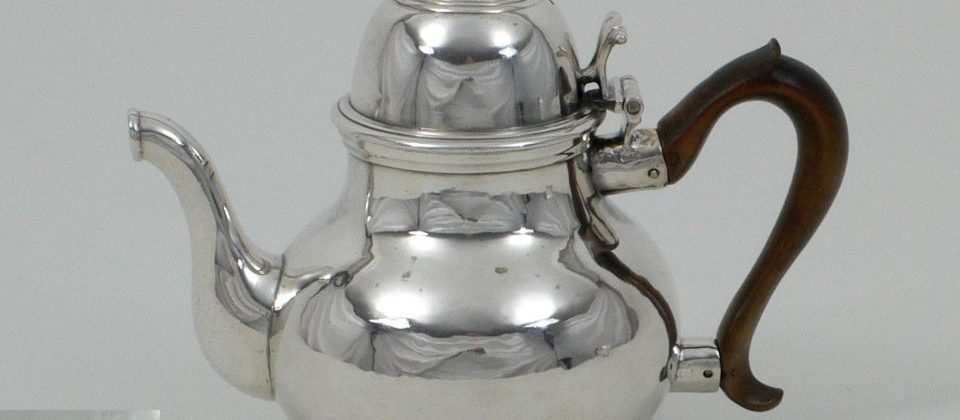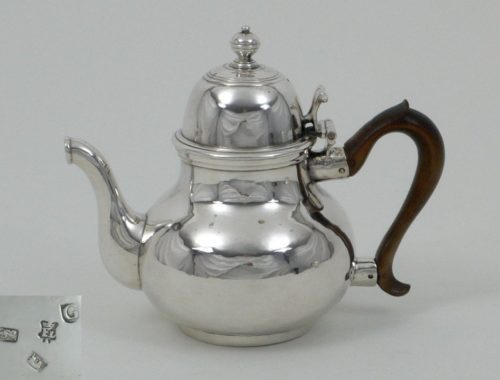Object Number: #901
London 1722/3
Maker: William Fleming
City hallmark: figure of Britannia (Jackson 1921: 84)
Maker’s mark: initials “FL” under crown in a curved shield for William Fleming (Grimwade 1990, Nr. 694)
Assay mark: lion’s head erased (Jackson 1921: 85)
Date letter: “G” in shield for 1722/3 (Jackson 1921: 85)
Dimensions: height: 15,2 cm (5,9 in.)
Detailed Information
George I Silver Pear-Shape Teapot
Early English teapot in pear-shape of the Britannia Standard period (95,84 % silver content). The walls are smooth and the hinged, highly vaulted lid has a baluster finial. The short spout has an S-form and the opposite, wooden handle has an ear-shape.
Tea came from Japan and China as a cultural influence resulted from the commercial connections of East Indian Companies (UK, the Netherlands) with the Far East. The development of the form of the teapot for tea as warm beverage has its own trajectory. England played however a defining role in it, due to the consumption of great quantities of tea there. Since the beginning of eighteenth century teapots are part of the household in England. The pear-shape of the smooth and non-decorated teapot applies to the stylistic developments of the early Georgian era.
Maker
Son of John Fleming, citizen and haberdasher of London. He apprenticed since 1688 to Nathaniel Lock and became a master maker in 1695. He entered his mark presumably in 1697, on commencement of register. His mark is frequently found on well-executed small pieces such as cream-jugs, casters, miniature porringers, etc. (s. Grimwade 1990: 510).
Literature
Grimwade, Ar., London Goldsmiths 1697-1837. Their marks and lives from the original registers at Goldsmiths’ Hall and other sources, GB: Faber and Faber, 1990
Hernmarck, Carl, Die Kunst der europäischen Gold- und Silberschmiede von 1450 bis 1830, C.H. Beck Verlag: München, 1978
Jackson, Ch., J., English Goldsmiths and their marks, London: MacMillan and Co. Limited, 1921



